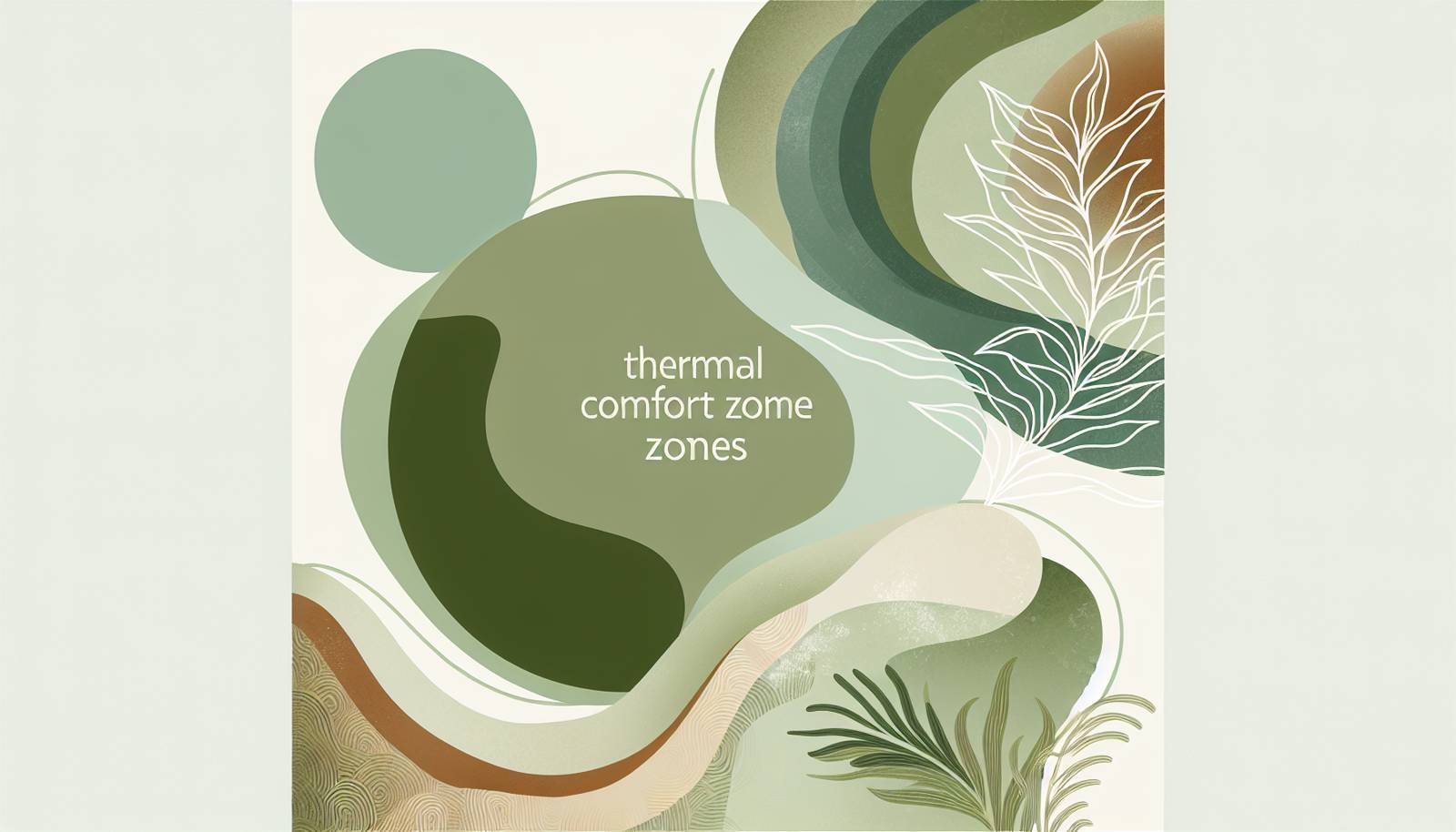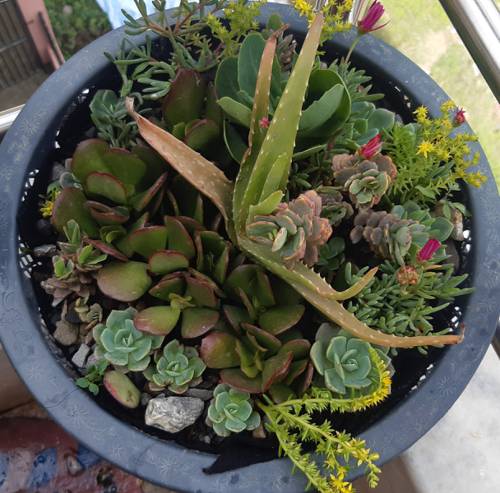
FAQ About Thermal Comfort Zones for Indoor Plants

What is a thermal comfort zone for indoor plants?
A thermal comfort zone for indoor plants refers to the range of temperatures in which plants can thrive without experiencing stress. This range considers both daytime and nighttime temperatures, as well as seasonal changes. Staying within this zone helps ensure optimal growth and health for various types of indoor plants.

Why are temperature fluctuations important for indoor plants?
Temperature fluctuations are important for indoor plants because they mimic natural conditions, which can promote healthy growth. Many plants are accustomed to the cooler temperatures at night followed by warmer daytime temperatures. Providing an appropriate fluctuation between daytime and nighttime temperatures can help support a plant’s natural growth cycles.

What is the ideal temperature range for most indoor plants?
The ideal temperature range for most indoor plants is typically between 60°F to 75°F (15°C to 24°C) during the day and slightly cooler at night, around 55°F to 65°F (13°C to 18°C). However, each plant species may have specific requirements.

How does seasonal change affect indoor plant temperature needs?
Seasonal changes can affect the temperature and light levels in your home, thus impacting indoor plant care. During the summer, plants may need protection from excess heat, while in the winter, they might require additional warmth to maintain optimal conditions. Adjusting your indoor environment to accommodate these changes is key to promoting plant health.

Can indoor plants survive in air-conditioned rooms?
Yes, many indoor plants can survive in air-conditioned rooms. However, they need to be kept away from direct cold drafts, as sudden temperature drops can lead to stress. It’s important to maintain a steady and suitable temperature within the plant's comfort zone.

Are there any tools to help monitor the temperature for indoor plants?
Yes, tools such as digital thermometers, hygrometers, and smart sensors can help monitor indoor temperatures, ensuring they remain within the optimal range for your plants. These tools can provide real-time data and alerts for temperature and humidity levels, making plant care easier.

What are the signs that an indoor plant is in the wrong temperature zone?
Signs that an indoor plant is in the wrong temperature zone include leaf wilting or drooping, browning edges, slowed growth, or shedding leaves. These symptoms indicate stress, often due to exposure to temperatures outside the plant’s comfort zone.

How can you create a thermal comfort zone for indoor plants in winter?
In winter, it’s important to keep indoor plants away from cold drafts and ensure they receive adequate light. Using plant heating mats, relocating them to warmer areas of the house, and ensuring the surrounding ambient temperature does not fall below the plant's minimum comfort zone can help maintain a suitable environment.

Does humidity affect thermal comfort zones for indoor plants?
Yes, humidity interacts closely with temperature to influence a plant’s environment. Many indoor plants prefer higher humidity levels, which can be affected by heating systems in colder months. Keeping humidity within the ideal range for your plant species can prevent stress and promote healthy growth.

What indoor plants are most tolerant to low temperatures?
Some indoor plants that are more tolerant to lower temperatures include English Ivy, Peace Lily, and Snake Plant. These plants can generally withstand cooler environments without significant stress, though care should be taken to ensure they are not exposed to freezing temperatures.

Can high temperatures damage indoor plants?
Yes, high temperatures can cause damage to indoor plants. Excessive heat can lead to dehydration, leaf scorch, or even plant death, especially if humidity levels are also low. It’s critical to ensure temperatures do not exceed the optimal range and that plants are not placed in direct sunlight, especially through glass windows.

How does the use of artificial lights impact the thermal environment for plants?
Artificial lights can impact the thermal environment by contributing additional heat to the surroundings. While they are beneficial for photosynthesis, it's crucial to monitor the temperature and avoid excessive heat build-up. LED lights emit less heat compared to traditional bulbs, making them a better choice for maintaining appropriate temperatures.

What effect do heaters have on indoor plants?
Heaters can dry out the air and create a warmer microclimate, sometimes making the environment too hot or too dry for indoor plants. Maintaining a balance with humidifiers and ensuring plants are not directly in the line of hot air flow can help mitigate negative effects.

Can moving plants frequently affect their thermal comfort?
Frequently moving plants can disrupt their adaptation to a specific thermal comfort zone, potentially causing stress due to changes in light, temperature, and humidity. It’s best to find a stable spot where conditions meet the plant's needs and avoid unnecessary movement.

What indoor plants prefer higher temperature ranges?
Indoor plants like Aloe Vera, Jade Plant, and Dracaena thrive in higher temperature ranges. These plants are more suited to warm environments and can generally handle temperatures up to 80°F (27°C) or higher, provided other factors like humidity are aligned.

How can you increase humidity to keep the thermal zone optimal for plants?
To increase humidity, you can use humidifiers, place water trays or pebble trays near plants, or group plants together. These methods help maintain a humid environment, preventing the dry air that heating systems often cause.

Should you adjust watering practices based on indoor temperatures?
Yes, watering practices should be adjusted according to indoor temperatures. In warmer conditions, plants may require more frequent watering, whereas in cooler temperatures, over-watering becomes a risk. Always check soil moisture before watering to ensure it's necessary.

What role does ventilation play in maintaining thermal comfort for plants?
Ventilation helps regulate temperature and humidity, ensuring fresh air circulation, which can prevent diseases and improve plant health. Good airflow maintains even temperatures and reduces humidity-related problems, making it an essential aspect of plant care.

How can windows influence the thermal conditions for indoor plants?
Windows can have a significant impact due to light and temperature changes. During the day, they can increase heat whereas at night, they can lead to cold drafts. It's important to position plants carefully and use curtains or blinds to manage temperature fluctuations effectively.

What are the best practices for transitioning plants between indoor and outdoor environments?
Gradually acclimatize the plants to prevent shock by slowly increasing their exposure to the new environment over days or weeks. This includes monitoring both temperature and light conditions carefully, protecting them from extreme temperatures, and adjusting water and humidity levels accordingly.
